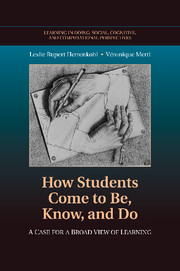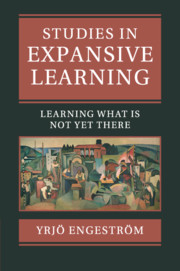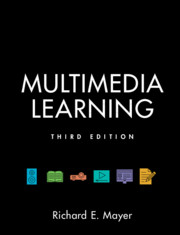How Students Come to Be, Know, and Do
Studies of learning are too frequently conceptualized only in terms of knowledge development. Yet it is vital to pay close attention to the social and emotional aspects of learning in order to understand why and how it occurs. How Students Come to Be, Know, and Do builds a theoretical argument for and a methodological approach to studying learning in a holistic way. The authors provide examples of urban fourth graders from diverse cultural and linguistic backgrounds studying science as a way to illustrate how this model contributes to a more complete and complex understanding of learning in school settings. What makes this book unique is its insistence that to fully understand human learning we have to consider the affective-volitional processes of learning along with the more familiar emphasis on knowledge and skills.
- Makes an argument for a view of human learning that engages the affective-volitional processes of becoming students alongside and in conjunction with processes of knowing
- Provides a theoretical argument as well as empirical examples
- Incorporates teacher and student interviews together with extensive transcripts to present a more complex view of student learning in school science contexts
Reviews & endorsements
“This excellent book beautifully captures the ways in which learning is simultaneously deeply subjective as well as relational. It is an essential resource for science educators who understand learning as entailing more than conceptual or procedural knowledge. Perhaps most importantly, it reveals and carefully documents the ways in which science learning, long described as knowing and doing by advocates of inquiry-based science instruction, is just as inextricably bound with ways of being, that is, with interests, ideas, perspectives, traditions, and life purposes.”
– Bronwyn Bevan, Exploratorium
“Drawing on a rich qualitative data set and utilizing an analytical lens that considers multiple layers of context, including school and classroom systems, teacher-student and peer interactions, and personal negotiations in the classroom, Herrenkohl and Mertl re-envision and reconceptualize the nature of learning. No longer can we think of classroom learning as simply what happens in the heads of students as they sit in their desks. No longer can we ignore the motivational, volitional, and interpersonal aspects of learning. The expanded view of learning offered in this book honors the complexity of human learning and provides a theoretically and methodologically sound approach to understanding that complexity.”
– Na'ilah Suad Nasir, University of California, Berkeley
“This book offers a fascinating account of how one teacher and her 4th-grade students create a classroom consisting of a community of learners. In this rich and detailed study the authors show how both teacher and students are transformed as they engage in a diversity of authentic scientific practices. Their research offers the field detailed insights into how this outcome is achieved, the challenges it presents, and their resolution.”
– Jonathan Osborne, Stanford University
“How Students Come to Be, Know, and Do expands the field’s vision of learning from one of teaching students to developing people. Herrenkohl and Mertl view learning as a dynamic, co-constitutive interaction of conceptual and epistemological practices – in this case, in school science. They present an engrossing case study of fourth grade students from varied backgrounds taught by a remarkable teacher, where the deep and careful intellectual work they do together will ring true for anyone who has spent time in classrooms in which knowledge and ways of knowing are being actively constructed, pulled apart, and reconstructed. One gets a palpable sense of who these students are – as learners of science and doers of life.”
– Ann S. Rosebery, Chèche Konnen Center, TERC
"Herrenkohl and Mertl (both, Univ. of Washiogton) have written a book advocating a broader view of learning than contemporary schools reflect. For those who believe that educational accountability and its attendant focus on semantic learning have created a too focused kind of educational experience, How Students Come to Be, Know, and Do suggests an alternative model.... Herrenkohl and Mertl have a very detailed study of how students learn and how they learn differently. The conclusions are intended to address the problems of students who consistently underachieve.... Recommended...."
- D. E. Tanner, California State University, CHOICE
Product details
January 2015Paperback
9781107479180
240 pages
230 × 153 × 14 mm
0.35kg
10 b/w illus. 2 tables
Available
Table of Contents
- Introduction
- 1. The context lens
- 2. How ways of knowing, doing, and being emerged in the classroom: interpersonal interactions and the creation of community, part I
- 3. How ways of knowing, doing, and being emerged in the classroom: interpersonal interactions and the creation of community, part II
- 4. Personal lens of analysis: individual learning trajectories
- Conclusion.




